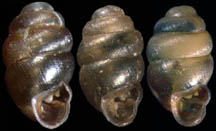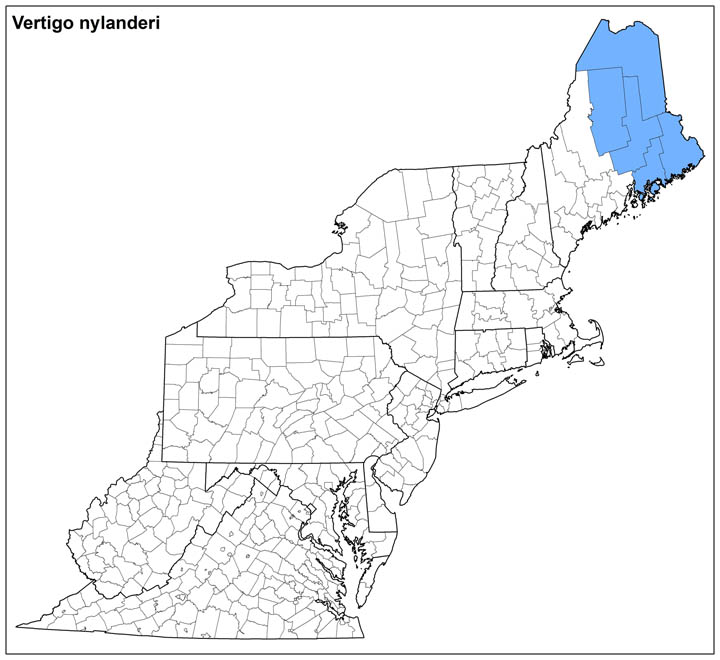Land Snails

Photo: From left to right: Vertigo nylanderi, Brown County, Wisconsin; United Counties of Leeds & Grenville, Ontario, Canada; Baileyville, Washington County, Maine. Images by Jeffrey C. Nekola ©
Click photo to enlarge.
Vertigo (Vertigo) nylanderi Sterki, 1909
Family: Vertiginidae
Identification
Height: 1.6-1.8 mm;
Width: 0.8-0.9 mm
Whorls: 5
This species and V. arthuri possess the only shells in the subgenus Vertigo for which the lower palatal lamella is more deeply inserted into the aperture than the upper. Vertigo nylanderi differs from V. arthuri in its longer and more deeply inserted lower palatal lamella, taller than wide columellar lamella, and more prominent angular lamella.
Ecology
Vertigo nylanderi is limited to wooded wetlands dominated by northern white cedar, tamarack or alder (Nekola and Coles, 2010). In such habitats is often found in places with a well-developed graminoid ground layer). It is quite tolerant of acidic soil conditions. In places where it co-occurs with V. arthuri, V. nylanderi always favors wetter microsites. Type Locality: Woodland, Aroostook County, Maine, U.S.A.
Taxonomy
There are no synonyms.
Distribution
The known range of V. nylanderi extends from easternmost Maine west through central Ontario and the northern Great Lakes to northwestern Minnesota and central Manitoba (Nekola and Coles, 2010). It is expected from the Maritime Provinces of Canada and the taiga of Saskatchewan and eastern Alberta.
Conservation
NatureServe Global Rank: G3-G4. Vulnerable to Apparently Secure. This species could be listed as G5, given its extensive range and frequent occurrence within its favored habitats: for instance, two-thirds of all sampled white cedar-black ash wetlands in eastern Maine supported this species (Nekola, 2008).
Jeff Nekola 9/2017
Range Map (click to enlarge)



